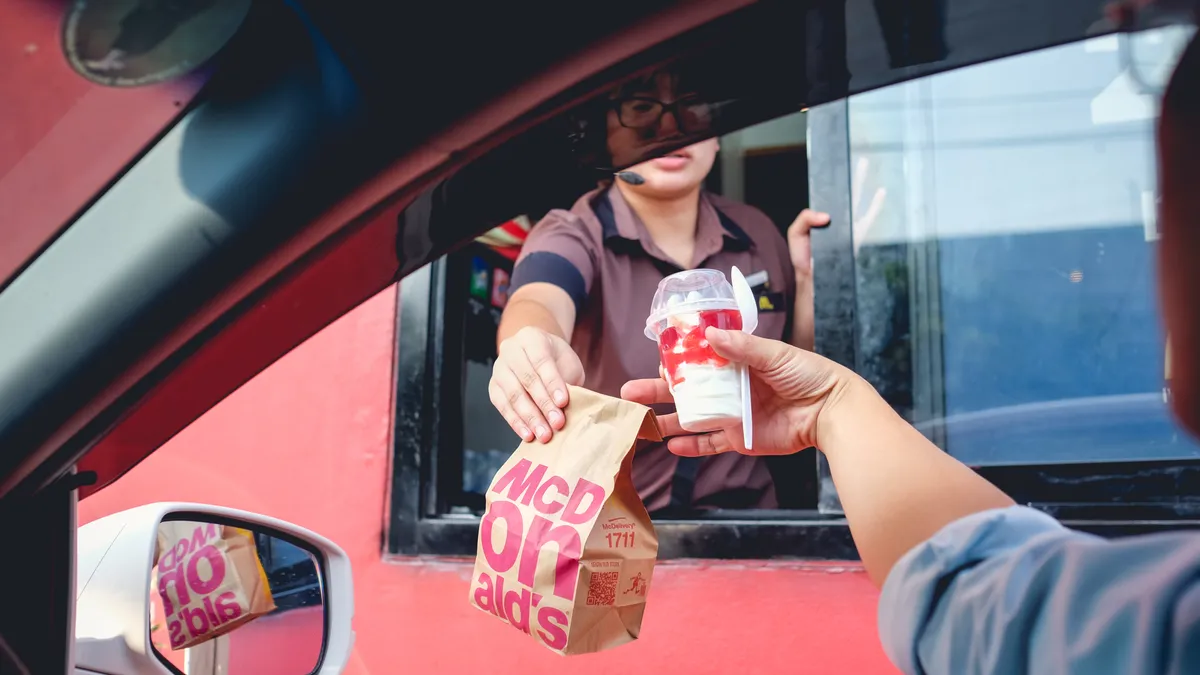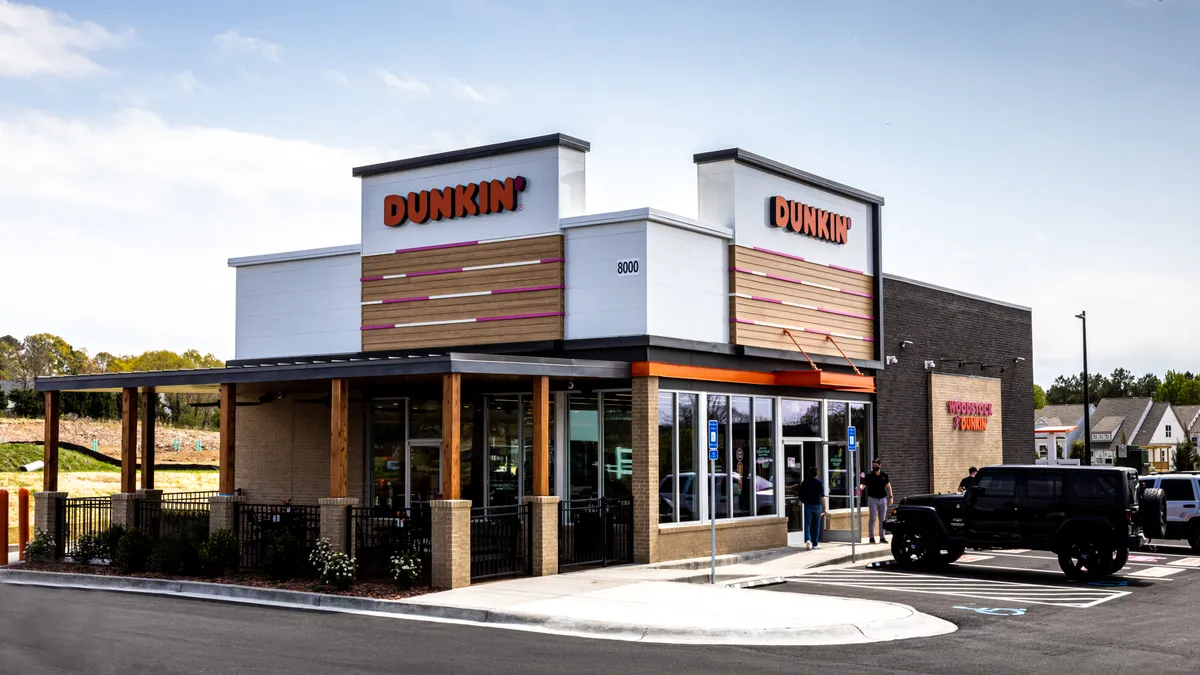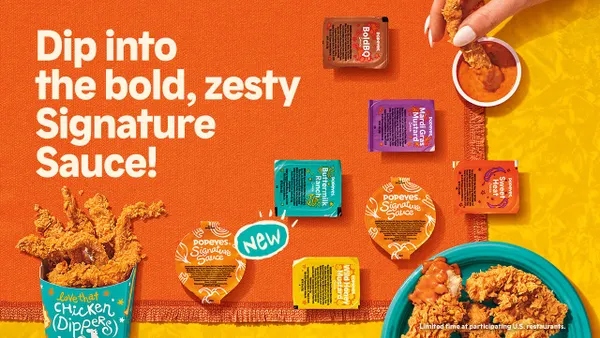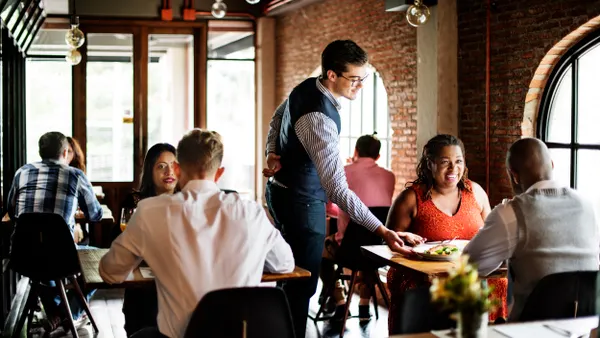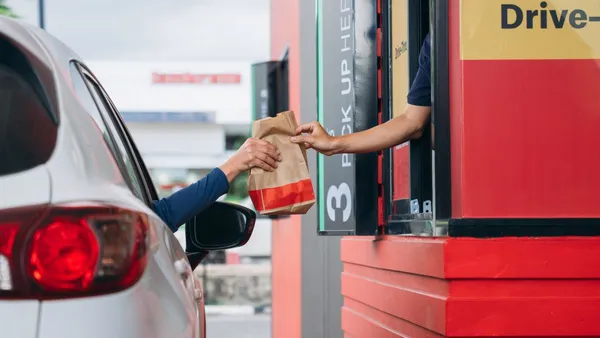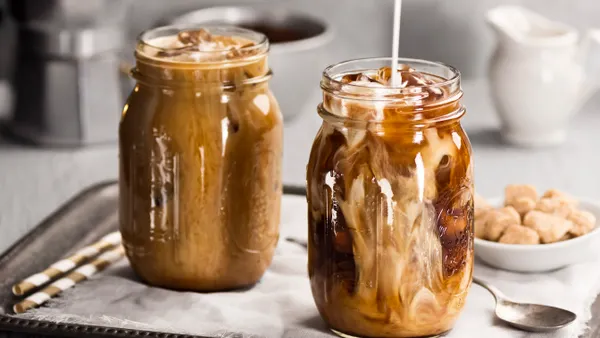Innovative restaurant chains and food delivery apps pose a rising threat to grocers, who have fought back with their own creative meal offerings ranging from grab-and-go sandwiches to made-in-house pizza.
As the battle continues to evolve, some retailers are probing a question that's become increasingly commonplace in the industry: If you can't beat them, why not partner with them?
Last month, Kroger announced that its Mariano's banner will soon be home to Pork & Mindy's barbecue mini-restaurants inside 28 Chicagoland stores. The chain is a local favorite owned by Food Network celebrity chef Jeff Mauro.
Kroger is also bringing Ohio-based Rapid Fired Pizza to the retailer's Marketplace stores throughout the Buckeye state. The fresh pizza chain offers build-your-own pizza, pasta and calzone options, as well as take-and-bake pizzas.
"We had a comment from a customer the other day where she said, 'gee, I planned on going home to make mac' and cheese, but I saw the pizza and decided to get one of those instead,'" Rapid Fired Pizza CEO Ray Wiley told Grocery Dive. "Kroger is a new venue for us. It's something we are seeing in grocery stores, and we thought we’d give it a try to see how it works."
Restaurant tie-ups are nothing new for grocers. But with millennials less interested in the restaurant chains of their childhoods and more eager to discover new tastes, retailers are finding more reasons to partner with the popular local and fast-casual dining destinations that are resonating at meal times.
These tie-ups take on added significance as e-commerce sales for both restaurants and supermarkets rise. Although restaurant foot traffic is declining, delivery sales are expected to grow more than 22% per year through 2023, according to L.E.K. Consulting. Retailers can get in on that boom by offering branded meal options along with groceries for delivery or pickup.
Whole Foods has been leading the expedition into local chain partnerships, partnering with Filipino-themed food truck Orange Crunch in the Denver region in 2014 and acquiring a minority stake in California sandwich and salad restaurant Mendocino Farms in 2015. The chain had placed popular local names inside its 365 stores, ranging from Orwashers bakery in Brooklyn to Yellow Fever Asian cuisine in Long Beach, California. That store format has been discontinued under new owner Amazon, but the chain has continued to invest in restaurants, opening its eighth location of the plant-based fast food joint Next Level Burger in an Austin store last fall.
H-E-B, a chain known for hatching its own foodservice concepts, recently linked up with a New York restaurant group to launch upscale cafes alongside several Texas stores. Earlier this month, The Roastery opened its third location adjacent to an H-E-B in Houston, featuring an in-store roaster and a selection of coffees, teas and light bites.
Freshii, the fresh-focused restaurant chain now operates 100 outposts inside Walmart stores in Canada, while c-store giant 7-Eleven added a Laredo Taco Company taqueria inside its recently opened Dallas concept store.
And then there's Hy-Vee, which struck a franchise deal to open more than two dozen Wahlburgers restaurants across its eight-state footprint. The Midwestern grocer has also incorporated some of the burger chain's offerings, including the signature Wahlburger, into menus at its Market Grille stores.
For supermarkets, linking up with restaurants adds valuable name recognition that can drive traffic to stores. They also add a dash of expertise to grocers' evolving meal efforts, which now include everything from meal kits to sushi stations.
At the very least, being able to pick up a meal from a trendy restaurant in addition to groceries could be a tipping point for shoppers in crowded markets.
The relationship has exceeded Wahlburger CFO and interim CEO Patrick Renna's expectations, offering benefits like new market exposure and even keen ideas from Hy-Vee, like testing plateware in its restaurants instead of Wahlburgers baskets, he told Grocery Dive.
For Hy-Vee, the tie-up is one of numerous experiments aimed at reaching beyond the traditional grocery store experience. The chain has also launched new store formats and has invested significantly in its e-commerce platform, Aisles Online.
"Innovation has become especially important to Hy-Vee as customer lifestyles and attitudes toward retail shift," a spokesperson for Hy-Vee wrote in an email to Grocery Dive. "The Wahlburgers restaurants complement Hy-Vee's Market Grille restaurants, and tie into our commitment to providing culinary expertise and experience."
For restaurant chains, the opportunity to open a franchise inside of a grocery store offers access to a new market of customers who may not have stopped by the original restaurants.
"It also allows us to go into cities where we wouldn't normally go into maybe because of the location or we just may not have a franchisee for that market," said Wiley of Rapid Fired Pizza. "It works nicely as a first-to-market store location, too. If we are going into Tennessee and Kroger has a store down there, we might put a restaurant in that grocery store location before putting in a brick-and-mortar store to see how that location does first. It gives us a chance to grow some exposure to customers in that area so they can get to know our brand, and that way when we do open a store they are more familiar with us."
A few months into the partnership with Kroger, Wiley is pleased with how the new store locations are performing so far and hasn’t noticed much difference in the daily operations of the in-store eateries compared to his existing store locations.
"What you have to remember is that running a grocery store and running a restaurant are two entirely different things."

Wade Hanson
Principal, Technomic
Not all that glitters is partnership gold
But supermarkets and local restaurant chains should both proceed with caution before delving into a partnership, Wade Hanson, principal with foodservice research firm Technomic, told Grocery Dive. Managing two very different businesses can be very complex, and bringing them under one roof can be a recipe for disaster if the partners don’t think through the deal carefully.
"What you have to remember is that running a grocery store and running a restaurant are two entirely different things," Hanson said. "They are both difficult things and trying to do both under the same roof with similar leadership is really, really tough to do and to do well and profitably. That reality in and of itself is driving a lot of retailers to rethink some of the in-store restaurant businesses."
Wegman's has gone all in on the in-store eatery model developing a number of concepts including Market Café, Blue Dalia Restaurant and Tequila Bar, The Pub, Next Door, and Amore Italian Restaurant and Wine Bar. Many retailers, lured by this level of creativity and success, have waded into new foodservice concepts without fully appreciating the operational difficulties, Hanson said. This includes menu development, staff training, regulatory compliance and effectively siting the restaurant inside the store.
Partnering with a local chain can alleviate some, though certainly not all, of these hazards, Hanson said. He noted the best reason to partner with a local chain is the ability to draw shoppers and, ideally, get them to see a retailer in a new light.
"If you have a local chain building up some kind of name recognition, some cache, some unique elements then there's some real benefit to that," Hanson said. "It helps establish a point of differentiation from other food retailers that consumers have to choose from, and it might develop a local or community-focused recognition. Maybe the restaurant has a specialty that you couldn't replicate if you wanted to. We see this often in ethnic cuisines where the local demographic is interested in a certain type of cuisine like Indian or Mediterranean food."
Despite the complexities of these deals, Hanson anticipates the industry will see more supermarkets and restaurant chains announcing partnerships. The trend toward in-store eateries will likely continue as prepared foods and foodservice sales continue to grow, he said. And given the challenges of developing in-store eateries, supermarkets may increasingly look to established restaurants to provide the expertise and competitive edge they need.
"Many have tried to develop their own and realize how difficult it is and how hard it is to manage it profitably," said Hanson.
The secret ingredient to partnership bliss lies in shared values, according to Renna. Aligning on values and shared goals is critical to any potential partnership checklist, he said, but both sides of the deal should be sure it's the right move to begin with.
"Whether you are building out your own café or having some type of seating with atmosphere it's very challenging for most grocery stores to think about a full-service restaurant," Technomic's Hanson cautions. "You have to start at the beginning and focus on whether it makes sense for you to have a restaurant from an overall strategic standpoint."




